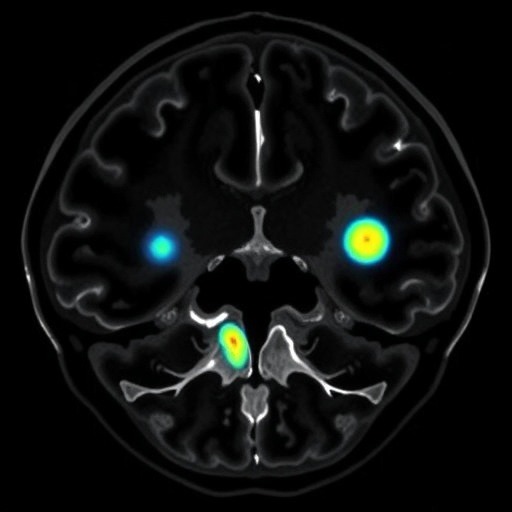In a groundbreaking study poised to advance the diagnostic landscape of chronic lymphocytic leukemia (CLL), researchers have piloted the application of optical genome mapping (OGM) to complement traditional fluorescence in situ hybridization (FISH) analysis. Chronic lymphocytic leukemia, characterized by its clinical heterogeneity, has long challenged clinicians due to the complex genomic alterations that underpin its progression. While FISH has been the cornerstone cytogenetic tool, its focus on predetermined loci limits the scope of detectable aberrations, potentially overlooking critical genomic alterations with prognostic value.
The central thrust of the study, published in BMC Cancer (2025), involves a direct comparison of FISH and OGM in analyzing genomic anomalies in 20 newly diagnosed or treatment-naive CLL patients. The adoption of OGM represents a significant technological evolution, harnessing advanced optical and molecular techniques to deliver comprehensive, genome-wide structural variant detection. Unlike FISH, which requires prior knowledge of target loci and fluorescent probes, OGM maps ultra-high molecular weight DNA molecules, enabling the identification of structural variations (SVs), copy number variations (CNVs), and chromosomal aneuploidies across the entire genome with high resolution.
CLL’s genetic heterogeneity stems from a diverse array of SVs and CNVs that influence both disease course and treatment responsiveness. The customary reliance on FISH panels, designed to detect commonly recurrent abnormalities such as del(13q), del(11q), trisomy 12, and del(17p), provides a limited genomic snapshot. However, by integrating OGM, the researchers sought to cast a wider net, unveiling cryptic abnormalities and refining the cytogenetic characterization of CLL.
The patient cohort, with a median age of approximately 61.5 years and predominantly male representation, was subjected to both cytogenetic modalities. Two patients exhibited no detectable abnormalities through either technique, underscoring instances of genetically bland disease presentations. More revealing were the findings in the remaining 18 patients where OGM detected a multiplicity of aberrations—comprising 22 structural variants, 32 copy number variations, and 8 aneuploid abnormalities. Notably, in three patients, FISH failed to detect any abnormalities while OGM uncovered significant genomic lesions, highlighting the complementary nature of OGM to established cytogenetic assays.
The technical prowess of OGM hinges on its ability to visualize DNA molecules exceeding hundreds of kilobases in length, providing contiguous genomic maps that improve the sensitivity for detecting structural variations. This capacity allows for the detection of balanced rearrangements, inversions, and large insertions or deletions, which are often undetectable by FISH or conventional karyotyping. Moreover, OGM’s precise quantification of CNVs surpasses traditional copy number assays, offering insights into submicroscopic deletions or duplications that may carry clinical significance.
One salient aspect of this study is its pertinence to the prognostic stratification of CLL patients. The identification of additional chromosomal abnormalities missed by FISH—especially in patients deemed genomically normal—suggests that OGM can refine risk assessment models. Given that treatment strategies increasingly incorporate genomic data, the comprehensive profiling provided by OGM could inform personalized therapeutic decisions, optimize patient outcomes, and potentially reveal novel therapeutic targets in CLL.
From a methodological perspective, the integration of OGM into clinical workflows introduces challenges and opportunities. While OGM requires high-quality DNA and sophisticated analysis platforms, its non-reliance on patient-specific probes facilitates scalable genomic interrogation. The pilot nature of this study demonstrates proof of principle but invites larger-scale validation studies to establish standardized protocols, define clinical cutoffs, and assess cost-effectiveness relative to established techniques.
The study’s descriptive statistics format, dictated by its modest sample size, nonetheless provides compelling evidence that OGM can uncover genomic complexity unseen by FISH. The multiplicity of detected SVs and CNVs advocates for a paradigm shift—from locus-specific to genome-wide cytogenetic investigations in hematological malignancies. Moreover, complementing traditional FISH panels with OGM may resolve diagnostic ambiguities and improve the accuracy of cytogenetic reports integral to clinical decision-making.
The promise of OGM extends beyond CLL, with potential applications across diverse cancer types and genetic disorders characterized by structural genomic variations. Its implementation may catalyze advances in precision oncology, enabling clinicians and researchers to untangle the complex genomic architectures that drive malignancies. As such, this study exemplifies the merger of innovative genomic technologies with clinical hematology, heralding a new era of comprehensive genome analysis.
Researchers and clinicians should consider the implications of detecting previously hidden lesions in CLL, as these may affect prognosis, therapeutic resistance, and disease monitoring strategies. The data suggest that patients deemed low-risk by FISH alone might harbor genomic features conferring higher risk, thereby influencing surveillance and treatment intensity.
The methodological rigor and technological innovation embodied in optical genome mapping mark a pivotal evolution in cancer cytogenetics. Given the limitations of conventional techniques constrained to predefined loci, OGM’s unbiased, genome-wide scope is a formidable asset. Its introduction into clinical settings, albeit associated with technical and economic challenges, could redefine standards of care.
This pilot evaluation is a clarion call for the broader adoption of OGM in routine CLL assessments. By expanding the cytogenetic horizon, OGM empowers clinicians with a more holistic genomic picture, fostering improved prognostication and individualized patient management. Future investigations should focus on integrating OGM with other genomic modalities, such as next-generation sequencing, to develop comprehensive diagnostic pipelines.
In summation, the study convincingly demonstrates that optical genome mapping complements and enhances the conventional FISH approach in chronic lymphocytic leukemia. Unlocking hidden genomic alterations, OGM provides a pathway towards refined prognostic algorithms and the potential for personalized therapeutic avenues. This leap forward underscores the synergy between technological innovation and clinical acumen, heralding improvements in leukemia care paradigms.
Subject of Research: Chronic lymphocytic leukemia genomic profiling using optical genome mapping and fluorescence in situ hybridization.
Article Title: Pilot evaluation of optical genome mapping in chronic lymphocytic leukemia: complementing FISH analysis.
Article References: Erdem, S., Bayrak Tokaç, A.G., Aday, A. et al. Pilot evaluation of optical genome mapping in chronic lymphocytic leukemia: complementing FISH analysis. BMC Cancer 25, 1687 (2025). https://doi.org/10.1186/s12885-025-15140-6
Image Credits: Scienmag.com
DOI: https://doi.org/10.1186/s12885-025-15140-6
Keywords: Chronic lymphocytic leukemia, optical genome mapping, fluorescence in situ hybridization, structural variants, copy number variations, cytogenetic analysis, genomic profiling, prognostic biomarkers
Tags: advanced techniques for cancer genomicsaneuploidy detection in CLL patientschronic lymphocytic leukemia genetic analysisclinical implications of genomic alterations in CLLcomprehensive genomic profiling in CLLcopy number variations in chronic lymphocytic leukemiaenhancing cancer diagnosis with OGMFISH vs OGM in cancer diagnosisOptical genome mapping in CLL diagnosisprognostic value of genomic alterations in CLL.structural variant detection in leukemiatechnological evolution in leukemia diagnostics





